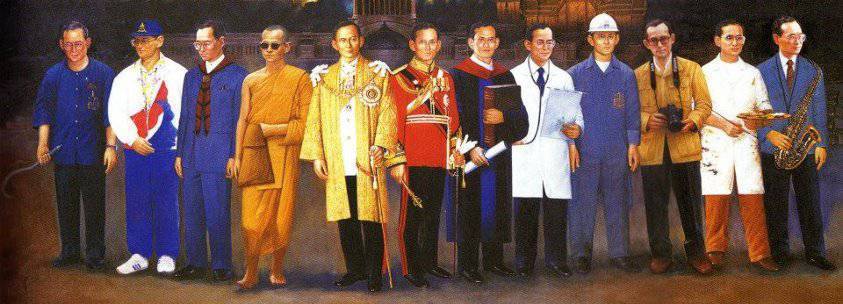Small house movement
The small house movement is a popular description for the architectural and social movement that advocates living in small homes. It is particularly vocal in the USA, where the book The Not So Big House is credited with starting the backlash against supersized homes.
Background
While in developed countries family size has been generally shrinking, in some countries family homes have grown in size, notably in the United States where the average size of new single family homes grew from 1,780 square feet (165 m2) in 1978 to 2,479 square feet (230.3 m2) in 2007.[1] Reasons for this include increased material wealth and prestige.[1]
Sarah Susanka has been credited with starting the countermovement toward smaller houses when she published The Not So Big House in 1997.[1]
In the USA in 2005, after Hurricane Katrina, Marianne Cusato developed the Katrina Cottages that start at 308 square feet (28.6 m2) as an alternative to FEMA trailers. Though these were created to provide a pleasant solution to a disaster zone, Cusato received wider interest in her design from developers of resorts, for example.[2]
With the financial crisis of 2007–2010 the small house movement has attracted more attention as it offers housing that is more affordable in acquisition and maintenance and ecologically friendly.[3]
Concurrently with these events, the interest in very small homes has been revived in other countries: in Japan, where space is at a premium, Takaharu Tezuka has built the House to Catch the Sky in Tokyo, a 458-square-foot (42.5 m2) home for four; in Barcelona, Spain, Eva Prats and Ricardo Flores presented 300-square-foot (28 m2) House in a Suitcase; in England, Abito created intelligent living spaces apartments of 353 square feet (32.8 m2) in Manchester; and the Micro Compact Home (M-CH) is a high end small house developed by the British architect Richard Horton and the Technical University of Munich.[1] The M-CH is a 76-square-foot (7.1 m2) cube, designed for 1–2 persons, and has functional spaces for sleeping, working/dining, cooking, and hygiene.[4]
Pros and cons
Larger homes are more costly in terms of building, taxes, heating, maintenance and repair. But the advantages of a small home exceed basic economics; such houses change the way people live and are attractive for people who want to lead a less cluttered and complicated life and reduce their ecological impact.[1] The typical size of a small home seldom exceeds 500 square feet (46 m2).[5]
Small houses represent not just a reduction in size but emphasize design over size,[2] utilize dual purpose features and incorporate technological advances of space saving equipment and appliances.[1]
Paradoxically, as small houses are very attractive to people looking for a second home, their increased utilization may lead to development of more land.[5] People interested in building a small home can encounter institutional “discrimination” when building codes require minimum size well above the size of a small home. Also, neighbors may be hostile because they are afraid of a threat to their property values.[6] However, this concern may be baseless as there is evidence that they actually increase property values through increases in density.[7] There has also been opposition based on this fact, due to concerns about increased taxes.[8][9][10]
Bibliography
Sarah Susanka, Kira Obolensky The Not So Big House: A Blueprint for the Way We Really Live Taunton (1998), ISBN 1-60085-047-2
See also
Tumbleweed Tiny House Company
Mobile Home
Cottage
References
^ a b c d e f g Carmela Ferraro (February 21, 2009). "Small but perfectly formed". Financial Times.
^ a b Al Heavens (June 14, 2007). "Smaller Could Be the Answer to a Lot of Issues.". Realty Times. Retrieved March 7, 2009.
^ The Economist (February 19, 2009). "Very little house on the prairie". The Economist. Retrieved March 7, 2009.
^ Lloyd Alter (July 10, 2008). "Home Delivery: The Micro Compact Home Comes To America". Treehugger. Retrieved March 7, 2009.
^ a b Bethany Lyttle (February 16, 2007). "Think Small". New York Times.
^ Carol Lloyd (April 27, 2007). "Small houses challenge our notions of need as well as minimum-size standards". SFGate. Retrieved March 4, 2009.
^ unknown (April 27, 2007). "Laneway housing handout". SFGate. Retrieved March 4, 2009.
^ josh dehass (November 13, 2008). "Laneway housing pilot proceeds despite opposition". UBC Journalism News Service. Retrieved July 27, 2012.
^ Charlie Smith (April 10, 2008). "Anxiety grows over EcoDensity in Vancouver". straight.com. Retrieved July 27, 2012.
^ Ned Jacobs (June 8, 2010). "The Vancouver neighbourhoods backlash continues".
www.francesbula.com. Retrieved July 27, 2012.
External links
Wikimedia Commons has media related to: Small houses
"We the Tiny House People"- documentary on YouTube
Small House Society
The Not So Big House website
Small House Style website
Buyers Flock To Ridiculously Small Homes During Downturn - slideshow at The Huffington Post
The Tiny Life
Less is more: Simple living in small spaces - video from BBC News
Simple living
Practices
Barter
DIY ethic
Downshifting
Forest gardening
Freeganism
Frugality
Gift economy
Intentional community
Local currency
No frills
Off-the-grid
Self-sufficiency
Subsistence agriculture
Sustainable living
Thrifting
Veganism
War tax resistance
WWOOF
Religious and spiritual
Asceticism
Aparigraha
Cynicism
Detachment
Jesus movement
Mendicant
Monasticism
New Monasticism
Plain dress
Plain people
Quakers
Rastafari movement
Temperance
Testimony of Simplicity
Tolstoyan movement
Secular movements
Back-to-the-land
Car-free
Compassionate Living
Ecological
Environmental
Hippie
Slow
Small house
Transition Towns
Open Source Ecology
Notable writers
Wendell Berry
Ernest Callenbach
Duane Elgin
Mohandas K. Gandhi
Richard Gregg
Tom Hodgkinson
Harlan Hubbard
Satish Kumar
Helen and Scott Nearing
Peace Pilgrim
Vicki Robin
Nick Rosen
Dugald Semple
E. F. Schumacher
Henry David Thoreau
Leo Tolstoy
Modern-day adherents
Mark Boyle
Jim Merkel
Suelo
Thomas
Media
Escape from Affluenza
The Good Life
The Moon and the Sledgehammer
Mother Earth News
The Power of Half
Small Is Beautiful
Walden
Related topics
Agrarianism
Anarcho-primitivism
Anti-consumerism
Appropriate technology
Bohemianism
Deep ecology
Degrowth
Ecological footprint
Food miles
Green anarchism
The good life
Global warming
Intentional living
Itinerant
Low-technology
Nonviolence
Peak oil
Sustainability
Work–life balance













